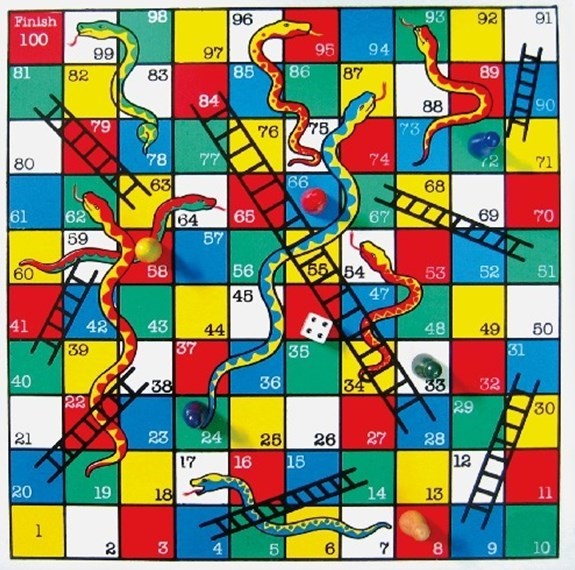Deeply rooted in the philosophical concept of good and bad – heaven and hell morals – the game we now know as Snakes and Ladders is thought to have originated in ancient India as a Hindu game known by names such as Moksha Patamu, Mokshapat, or Gyan Chaupar.
As one of the easiest games for a child to play with just two main rules: land on a snake head and slide down, land on the bottom of a ladder and climb up, it takes very little thought and is really only reliant on the roll of the dice.
This adaptation incorporates a fun musical twist that severely favours the instrument student!
What you need:

- a snakes and ladders board with tokens and dice, or an electronic snakes and ladders version
- 2 players – one music student and one parent or sibling
- your music instrument
- the piece of music you are working on

How to play:
- identify the piece of music, bar, passage or exercise that your teacher wants you to practice most
- player one (the music student) begins by rolling the dice
- player one then plays through the identified practice as many times as shown on the dice
- upon completion of the correct and beautiful repetitions, player one gets to move their token to the place on the board corresponding to their dice roll
- player two then rolls the dice and moves their token on the board, moving up the ladders and down the snakes
- if player one lands on a snake head, they can save themselves from sliding down by playing through a known piece (or revision piece) perfectly with excellent technique, posture and sound
- player two can only be similarly saved from the snakes on the board if player one chooses to play through a known piece (or revision piece) perfectly with excellent technique, posture and sound – but they may choose not to!
- first to reach the 100 square wins!
Remember, a short effective practice is always better than a long drawn out one.
To that end, it might be best to play this game over a few days, or a week of practices depending on the age of the student and where they are on their musical journey.

I really enjoy this theme youve got going on on your internet site.
What is the name of the theme by the way? I was thinking of using this style for the web site I am going
to construct for my class project.